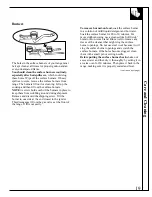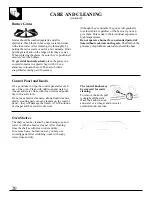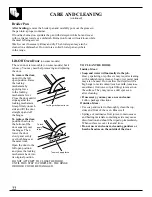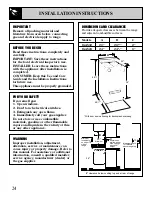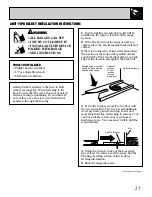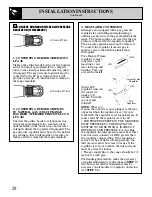
BAKING
How to Set Your Range For Baking
To avoid possible burns, place the shelves in the
correct position before you turn on the oven.
1. Close the oven door. Then turn the OVEN
TEMP knob to the desired temperature.
2. Check the food for doneness at the minimum time
on the recipe. Cook longer if necessary. Turn the
OVEN TEMP knob to OFF and remove the food.
For best baking results, follow these suggestions:
Oven Shelves
Arrange the oven
shelf or shelves in
the desired locations
while the oven is
cool. The correct
shelf position
depends on the kind
of food and the
browning desired.
As a general rule, place most foods in the middle of
the oven, on either the shelf position B or C. See the
chart for suggested shelf positions.
Type of Food
Shelf Position
Angel food cake
A
Biscuits or muffins
B or C
Cookies or cupcakes
B or C
Brownies
B or C
Layer cakes
B or C
Bundt or pound cakes
A or B
Pies or pie shells
B or C
Frozen pies
A (on cookie sheet)
Casseroles
B or C
D
C
B
A
Preheating
Preheat the oven for 10 minutes if the recipe calls for
it. Preheat means bringing the oven up to the specified
temperature before putting the food in the oven. To
preheat, set the oven at the correct temperature—
selecting a higher temperature does not shorten the
preheat time.
Preheating is necessary for good results when baking
cakes, cookies, pastry and breads. For most casseroles
and roasts, preheating is not necessary.
Baking Pans
Pan Placement
Use the proper baking pan. The type of finish on the
pan determines the amount of browning that will occur.
• Dark, rough or dull pans absorb heat resulting in a
browner, crisper crust. Use this type for pies.
• Shiny, bright and smooth pans reflect heat, resulting
in a lighter, more delicate browning. Cakes and
cookies require this type of pan.
• Glass baking dishes also absorb heat. When baking
in glass baking dishes, lower the temperature by
25°F. and use the recommended cooking time in
the recipe. This is not necessary when baking pies
or casseroles.
For even cooking and proper browning, there must be
enough room for air circulation in the oven. Baking
results will be better if baking pans are centered as
much as possible rather than being placed to the front
or to the back of the oven.
Pans should not touch each other or the walls of the
oven. Allow 1 to 1
1
⁄
2
inch space between pans as well
as from the back of the oven, the door and the sides.
If you need to use two shelves, stagger the pans so
one is not directly above the other.
(continued next page)
13
Using Y
our Oven
Baking
Summary of Contents for JGAS24
Page 34: ...34 NOTES...



















